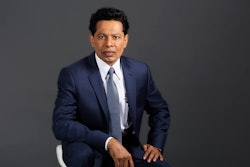
Back in 1998, in the International Ballroom of the Washington Hilton Hotel, Dun & Bradstreet CEO Terry Taylor delivered a simple message to members of the National Association of Purchasing Management: “A different ‘P’,” he said, “would suit you better.”
“Forget about ‘Purchasing management’,” Taylor proclaimed. “Given what you do to optimize margins, your real business is ‘Profit maximization’.”
He walked off to a standing ovation.
Much has changed since then. The National Association of Purchasing Management, widely known as NAPM, changed its name in 2002 to the Institute for Supply Management (ISM)—a nod to the growing criticality of procurement in the context of managing the supply chain. And the profession has burgeoned. No ballroom would hold ISM’s 48,000 current members; to address them, Taylor would have to move 12 miles east to FedEx Field, home of the NFL’s Washington franchise.
But the greatest change, by far, is evident in the new skillset and mindset of today’s procurement professionals: They’ve never been smarter, more demanding or better equipped to impose their terms. The reason: They have tools—spend data, competitive pricing data, all manner of Big Data and analytics—and they’re not afraid to use them to press sellers into slashing price.
How are sellers to respond, especially in categories like high-tech, chemicals, wholesale distribution and industrial manufacturing, where companies sell thousands of SKUs, each of which must be priced to compete effectively and still yield profit? I’ve talked a lot about the need for pricing that is nimble; about sellers who must command data—target price, walkaway price and more—to maneuver successfully while holding the line on the right price.
I’ve talked about margin growth as a game of inches, one that requires the same disciplined, data-driven approach typical of supply-chain management, production control, manufacturing and logistics. And I’ve talked about the contradiction of approaching margin management crudely, with little more than a gut feel for pricing that will satisfy customers and deliver profit.
Just as you wouldn’t allow a CFO to replace accurate cash reporting with a ballpark estimate, no revenue and profit forecasts are worth a dime unless they reflect the accuracy and reliability enabled by data science. And yet, while every other function has made major strides in this regard, pricing, by and large, remains a game of instincts.
We’re left with this irony: As buyers move relentlessly to negotiate with their heads, too many sellers remain content to follow their gut. And this at a time when mature industries—having leveraged outsourcing and implemented Six Sigma—are aggressively seeking new sources of EPS growth. So here’s the question: How to establish and sustain a culture of profit inside today’s enterprises, where pressures often run high to deliver revenue at any cost?
Perhaps the best way to answer is by asking another question: Who inside the company is responsible for profit? Google this simple query and you’d expect to find a simple answer: the CFO. But this isn’t the case; in fact, “profit” appears nowhere in any definition of the CFO’s role, which is to manage financial risk, oversee financial planning and manage cash flow.
“Managing cash flow” is a far cry from creating and enforcing a culture of profit. In fact, Google yields no answer to the question: Who in the enterprise is responsible for delivering profit? That’s because the responsibility for delivering profit is typically spread across the organization—laterally across divisions, and bottom-up from regional to corporate management. This must change, because the only way to institutionalize a culture of profit, the only way to make margin top of mind across the enterprise, is to turn it from a diffuse responsibility into a sharply-focused one.
And what better way to do this than by appointing a Chief Profit Officer, a move that not only would elevate pricing and profitability to e-team status, but also help protect the enterprise from internal and external threats to margin growth.
What functions should be within the purview of the Chief Profit Officer (CPO)?
Pricing, for one. It should be the CPO’s job to ensure that the enterprise is: determining and delivering the optimal price and guidance for all deals; setting prices in a single, rules-based system driven by relevant internal and external data; evaluating and enforcing pricing strategy on every deal; and identifying price, margin and profit opportunities for all units of the business.
But there’s more to optimizing profit than getting to the right pricing. Equally important is the ability to detect customer defections and prevent them proactively, while institutionalizing a sensibility that emphasizes the importance of upselling and cross-selling.
Also within the purview of the Chief Profit Officer: boosting win rates across the organization’s multiple sales teams, increasing average deal size and shortening the average sales cycle, all of which require arming sales reps with data and analytics that shed light on competitive offerings, competitive pricing and market trends. And because selling boils down to creating a perception of value, I’d like to see the Chief Profit Officer propagate a way of selling that focuses not simply on what the products do but also, and primarily, on what they enable.
And finally, if the Chief Profit Officer is to oversee pricing and other facets of selling critical to profit, such as boosting win rates and deal size, it stands to reason that he or she should do the same for buying. Because despite the fact that procurement professionals have never been smarter and more demanding, there are institutional imperatives attached to turning procurement into a profit-maker; among them, visibility into all spending by an enterprise. This would fall within the CPO’s purview, as well.
Given what we’d expect from this e-team member, his or her credentials should be multidisciplinary. The CPO should know how to manage sales teams, craft pricing to deliver profitable business (and knowing if price increases or decreases best serve the company’s interest) and how to manage procurement to create an enterprise adept at wringing costs from the system.
Measuring the CPO’s success becomes the final challenge. The most obvious metric is profit growth. While necessary, this is too broad. At the granular level, the key profit indicators on the CPO dashboard include revenue, deal closing prices and margins, to name a few. With the actions and responsibilities outlined above, the CPO will track profit opportunities pertaining to revenue, whether or not sales representatives are getting the best price from their negotiations, and how internal and external data can increase margins.
The final, and perhaps most important, success benchmark is more difficult to measure: cross-departmental communication. Since the CPO is inherently multidisciplinary, he or she will work directly with counterparts in different divisions— the CFO, CCO, COO, etc.—to ensure company profitability objectives are being prioritized and met. When working with the finance functions or sales teams, the CPO will facilitate the efficient transfer of information to stimulate productivity and actionable insights that foster growth.
In essence, instituting the CPO role guarantees your company maintains its focus on continued, sustainable growth for present and future initiatives.













